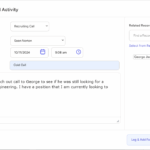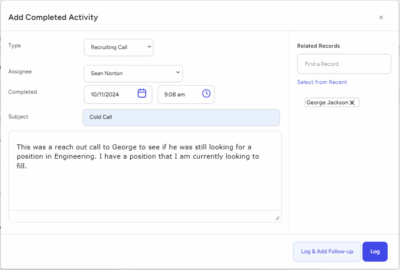For many applicants, today’s online application process is the black hole of the job search. Candidates wade through a bureaucratic employment portal that requires a login, a resume upload, and redundant manual entry of the same data already found on the CV. Often, these portals have technical problems that cause hiccups in the application process. If you do make it through, the automated system may discard you immediately because you don’t have enough keywords to fit the job.
This is exactly why 60% of applicants abandon their applications. The modern labor market is impatient with the time and energy it takes to apply online, and most often – or never – hear anything back at all.
Here’s why the online application process will become increasingly obsolete as next-generation applicant tracking systems eliminate the busywork of these outdated systems.
Why Online Job Portals Don’t Always Work
Any job seeker will tell you that the online job application process can be a vexing one. Many government, enterprise, and educational organizations require candidates to use outdated systems that require a candidate’s name, address, education, previous work history, and EOE information. Many of these platforms are awkward at best, requiring job seekers to laboriously type in resume details. Missing dates or abbreviations can confuse the ATS, which takes time to correct manually, and adding design elements to your resume to attract the eyes of human recruiters can throw older platforms off completely. For many applicants, tailoring a resume to ATS automation means sticking to simple Times New Roman fonts and black text in a simple Word document. Beyond any dumbing down of your credentials, it’s frustrating that many of these platforms still require the candidate to reformat data or add it manually after the portal scrapes details from a resume upload.
If the applicant perseveres to the end of the application, it is highly likely they will never hear from the organization again. It’s a terrible rate of return on energy expended – and job seekers know it. Just look at the statistics:
- Each corporate position attracts an average of 250 applications, and of those, only four to six will receive a call to interview. Of course, only one of those will get the job.
- U.S. News & World Report says only 15% of jobs are filled from job boards. Referrals and internal candidates fill the majority of open jobs.
- While job seekers spend 70 to 80% of their time filling out online applications, 70 to 80% of all jobs are not even published.
The questions these portals ask candidates are often too simplistic, failing to capture new information that actually adds something to the application process: How many times are candidates asked, “Tell us about your tasks and duties at the job?” It’s also common that the job seeker is asked about their salary requirements, but there is typically no way to clarify important details, including that things like culture, work-life balance, and benefits may be just as important as salary. Many times, candidates are even asked to list their references, which is really a waste of time at the early stages of the application process.
It’s far too common that these systems do not translate well to cell phones, even though the latest Pew Research findings state that 78% of all job applicants use their smartphones to respond to ads. Mobile job search is the single unifying thread that transcends demographic and occupational categories, but employers are failing in their response to this trend.
Traditionalists still believe that these stodgy online candidate application systems will weed out apathetic candidates and the good talent will see it through to the end. But today’s tight labor market puts the power back in the candidate’s hands; job seekers know that there are more employment opportunities out there, so the chances are high that they will simply move on to a process that is more appealing.
The end result for organizations is that they lose top talent. But is there an alternative?
Alternatives to the Traditional Online Application Process
Despite the concerns job seekers have with outdated job portals, sometimes capturing data via employment applications is very necessary. Your position may require specialized skills or experience that may not be on a resume. Or you may be hiring for very junior, entry-level positions, attracting candidates that may not have a resume. High-sensitivity or government clearance jobs often require an individual to verify that the information they’ve submitted is accurate – something that is difficult if all they’ve done is send in a resume.
So, while it’s clear that traditional employment applications are obsolete in an increasingly high-tech world, companies still need a way to capture a prospective new hire’s details.
The best solution is modern application software and applicant tracking systems (ATS), which allow users to tailor the candidate application process by the specific job. Companies can design their own customized process designed to entice candidates, rather than deflect them.
For instance, with an ATS like Top Echelon, you can:
- Require applications only for certain positions.
- Add video interviewing.
- Add personality assessments or other types of testing.
- Enable candidate assessments.
- Accept resumes, but also have pre-designed questions about specific skills or experiences as part of the application process.
- Customize questions in written, drop-down, or multiple-choice formats.
- Have the application form – if one is necessary – midway through the process, once a candidate is more invested & interested in the role.
- Automate reference checks.
On the back end, creating custom workflows to fit each job application process helps streamline process and reduce the time hiring teams spend on screening candidates.
Top Echelon Software is the next generation of application tracking systems designed for both types of end users – the candidate and the hiring team. It integrates seamlessly with your existing workflows and tools and is a simple, yet effective way to improve your candidate sourcing and hiring process.
The online employment application process is broken. What will fix it is the next generation of applicant tracking systems that allow companies to offer prospective hires a more intuitive and intelligent application process. This will help employers attract more candidates even to the most highly competitive positions.
Interested in how a next-gen ATS help you capture more candidates during the application process? Call the Top Echelon team today to find out how we can help.








